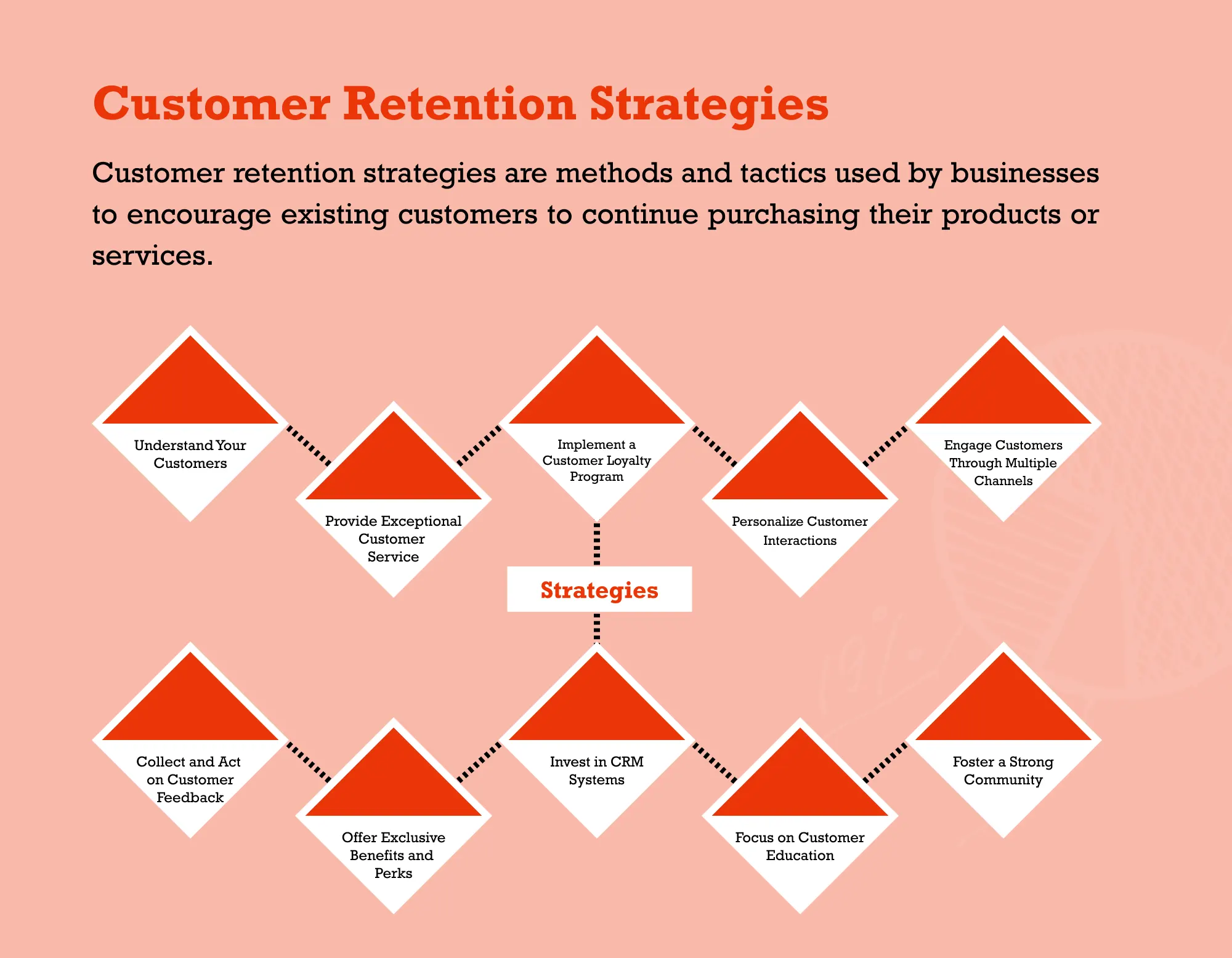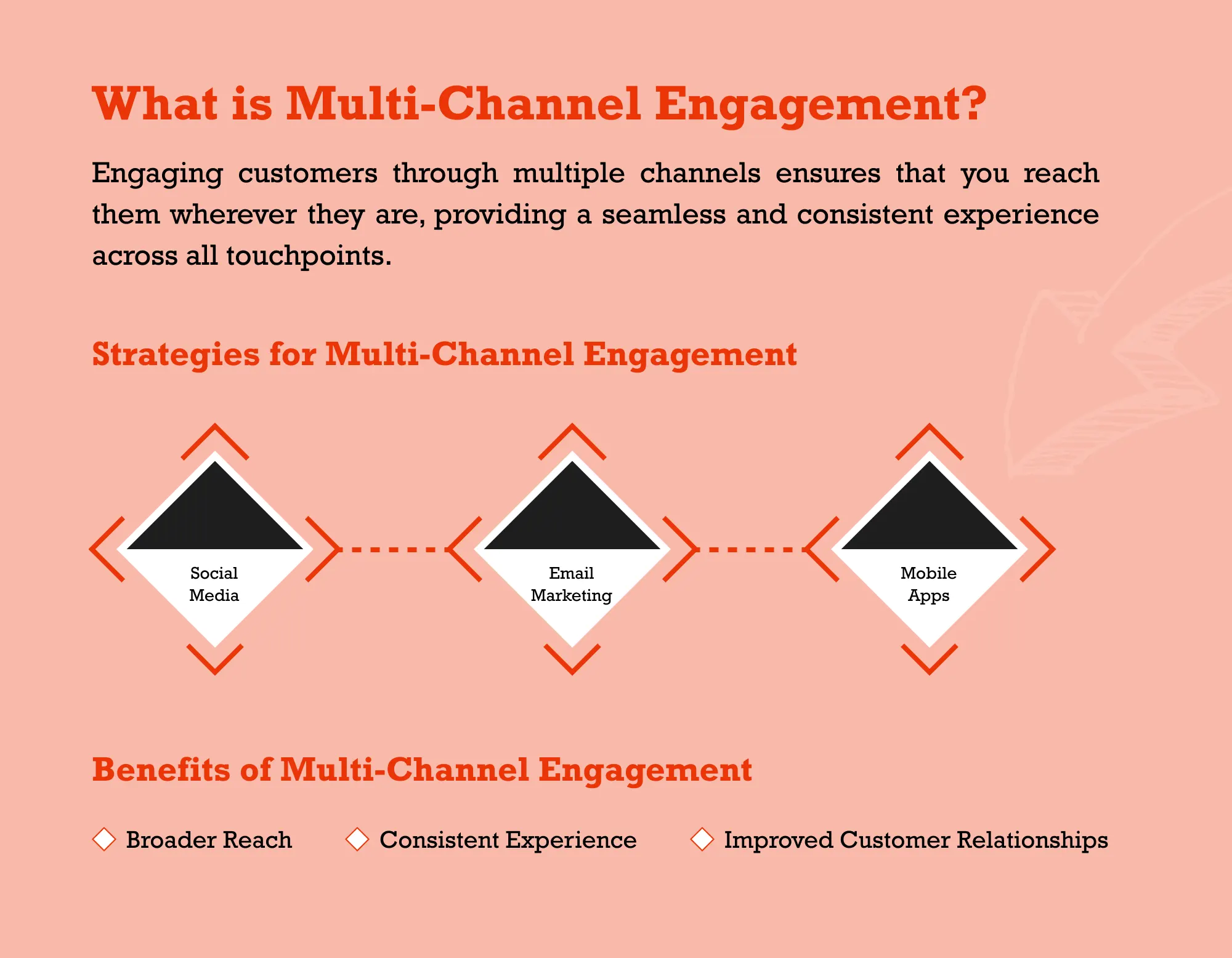In today's competitive business landscape, acquiring new customers is essential, but
retaining existing customers is equally, if not more, important. Customer retention
is a key driver of long-term growth and profitability. It costs significantly less
to retain a customer than to acquire a new one, and loyal customers are more likely
to make repeat purchases and refer others to your business.
This blog explores effective customer retention strategies that can help businesses
achieve long-term growth.
1. Understand Your Customers
The Importance of Customer Understanding
To retain customers, you must first understand their needs, preferences, and pain
points. This involves gathering and analyzing customer data to gain insights into
their behavior and preferences.
Strategies for Understanding Customers
- Customer Surveys: Conduct regular surveys to
gather feedback on customer satisfaction and areas for improvement.
- Data Analysis: Utilize analytics tools to analyze
customer data, such as purchase history, website interactions, and social media
engagement.
- Customer Segmentation: Segment your customers
based on demographics, behavior, and preferences to tailor your marketing
efforts.
Benefits of Understanding Customers
- Personalized Experiences: Tailoring your products
and services to meet customer needs leads to higher satisfaction.
- Improved Engagement: Engaging customers in a way
that resonates with them increases loyalty and retention.
- Better Decision Making: Data-driven insights
enable informed decisions that enhance customer retention.
2. Provide Exceptional Customer Service
The Role of Customer Service
Exceptional customer service is a cornerstone of customer retention. It ensures that
customers feel valued and supported, leading to increased loyalty and satisfaction.
Strategies for Enhancing Customer Service
- 24/7 Support: Offer round-the-clock customer
support through various channels, such as phone, email, and live chat.
- Training Staff: Invest in training programs to
equip your customer service team with the skills and knowledge needed to handle
customer inquiries effectively.
- Quick Response Times: Ensure prompt responses to
customer queries and complaints to demonstrate your commitment to customer
satisfaction.
Benefits of Exceptional Customer Service
- Customer Loyalty: Satisfied customers are more
likely to remain loyal and continue doing business with you.
- Positive Word-of-Mouth: Exceptional service leads
to positive reviews and recommendations, attracting new customers.
- Reduced Churn: Addressing customer issues
promptly reduces the likelihood of customers leaving for competitors.
3. Implement a Customer Loyalty Program
The Value of Loyalty Programs
Customer loyalty programs incentivize repeat purchases and foster long-term
relationships with customers. They reward customers for their loyalty, making them
feel appreciated and valued.
Strategies for Effective Loyalty Programs
- Points System: Implement a points-based system
where customers earn points for every purchase, which can be redeemed for
discounts or rewards.
- Tiered Rewards: Offer tiered rewards based on
customer spending levels, encouraging higher spending to unlock exclusive
benefits.
- Referral Bonuses: Provide incentives for
customers who refer new customers to your business.
Benefits of Loyalty Programs
- Increased Repeat Purchases: Rewards and
incentives encourage customers to make repeat purchases.
- Customer Engagement: Engaging customers through
loyalty programs enhances their connection to your brand.
- Data Collection: Loyalty programs provide
valuable data on customer behavior and preferences.
4. Personalize Customer Interactions
The Impact of Personalization
Personalization involves tailoring your interactions and offerings to individual
customers based on their preferences and behavior. It creates a more relevant and
engaging customer experience.
Strategies for Personalization
- Customized Recommendations: Use data analytics to
provide personalized product recommendations based on past purchases and
browsing behavior.
- Personalized Emails: Send personalized emails
with tailored content, offers, and recommendations.
- Dynamic Website Content: Implement dynamic
content on your website that changes based on the visitor's behavior and
preferences.
Benefits of Personalization
- Enhanced Customer Experience: Personalization
creates a more engaging and relevant customer experience.
- Increased Sales: Personalized recommendations and
offers drive higher conversion rates and sales.
- Customer Loyalty: Customers are more likely to
remain loyal to brands that understand and cater to their preferences.
5. Engage Customers Through Multiple Channels
Multi-Channel Engagement
Engaging customers through multiple channels ensures that you reach them wherever
they are, providing a seamless and consistent experience across all touchpoints.
Strategies for Multi-Channel Engagement
- Social Media: Actively engage with customers on
social media platforms by responding to comments, messages, and mentions.
- Email Marketing: Use email marketing to keep
customers informed about new products, promotions, and updates.
- Mobile Apps: Develop a mobile app to provide a
convenient and personalized shopping experience.
Benefits of Multi-Channel Engagement
- Broader Reach: Engaging customers through
multiple channels expands your reach and visibility.
- Consistent Experience: Providing a consistent
experience across all channels enhances customer satisfaction.
- Improved Customer Relationships: Regular
engagement through various channels strengthens customer relationships.
6. Collect and Act on Customer Feedback
Importance of Customer Feedback
Customer feedback provides valuable insights into what customers like, dislike, and
expect from your business. Acting on this feedback demonstrates that you value their
opinions and are committed to improving their experience.
Strategies for Collecting Feedback
- Surveys and Polls: Use surveys and polls to
gather feedback on customer satisfaction, product quality, and service.
- Online Reviews: Encourage customers to leave
reviews on your website and third-party review sites.
- Feedback Forms: Provide feedback forms on your
website and in-store for customers to share their thoughts.
Strategies for Acting on Feedback
- Analyze Feedback: Regularly analyze feedback to
identify common themes and areas for improvement.
- Implement Changes: Make necessary changes based
on customer feedback to enhance their experience.
- Communicate Updates: Inform customers about the
changes made in response to their feedback to show that you value their input.
Benefits of Collecting and Acting on Feedback
- Customer Satisfaction: Addressing customer
concerns and preferences leads to higher satisfaction and loyalty.
- Continuous Improvement: Feedback provides a basis
for continuous improvement in products and services.
- Customer Trust: Demonstrating that you listen to
and act on customer feedback builds trust and credibility.
7. Offer Exclusive Benefits and Perks
The Appeal of Exclusivity
Exclusive benefits and perks make customers feel special and valued, encouraging them
to remain loyal to your brand.
Strategies for Offering Exclusive Benefits
- Members-Only Discounts: Provide exclusive
discounts and offers to loyalty program members.
- Early Access: Offer early access to new products,
sales, and events to loyal customers.
- Special Events: Host exclusive events, such as
VIP shopping experiences or product launches, for your most loyal customers.
Benefits of Exclusive Benefits
- Increased Loyalty: Exclusive benefits incentivize
customers to remain loyal to your brand.
- Higher Engagement: Special perks and events keep
customers engaged and excited about your brand.
- Enhanced Customer Experience: Offering unique
benefits enhances the overall customer experience.
8. Invest in Customer Relationship Management (CRM) Systems
The Role of CRM Systems
Customer Relationship Management (CRM) systems help businesses manage and analyze
customer interactions and data throughout the customer lifecycle. Investing in a CRM
system can significantly enhance customer retention efforts.
Strategies for Using CRM Systems
- Centralized Customer Data: Use the CRM system to
centralize all customer data, including contact information, purchase history,
and interaction records.
- Automated Communications: Automate customer
communications, such as follow-up emails, birthday greetings, and loyalty
rewards notifications.
- Segmentation and Targeting: Segment customers
based on behavior and preferences to deliver targeted marketing campaigns.
Benefits of CRM Systems
- Improved Customer Insights: CRM systems provide a
comprehensive view of customer behavior and preferences.
- Enhanced Personalization: Centralized data allows
for more personalized interactions and marketing efforts.
- Streamlined Processes: Automating routine tasks
improves efficiency and ensures consistent communication.
9. Focus on Customer Education
The Importance of Customer Education
Educating customers about your products and services helps them make informed
decisions and enhances their overall experience. It also positions your brand as a
trusted expert in your industry.
Strategies for Customer Education
- Informative Content: Create and share informative
content, such as blog posts, videos, and tutorials, that educates customers
about your products and industry.
- Webinars and Workshops: Host webinars and
workshops to provide in-depth knowledge and training on your products and
services.
- Product Guides: Develop comprehensive product
guides and FAQs to help customers understand how to use your products
effectively.
Benefits of Customer Education
- Informed Customers: Educated customers are more
likely to make informed purchasing decisions and remain loyal.
- Customer Empowerment: Empowering customers with
knowledge enhances their satisfaction and trust in your brand.
- Reduced Support Costs: Providing educational
resources reduces the need for customer support, saving time and resources.
10. Foster a Strong Community
The Power of Community
Building a strong community around your brand fosters a sense of belonging and
loyalty among customers. A loyal community can act as brand advocates and drive
long-term growth.
Strategies for Building a Community
- Online Forums: Create online forums or social
media groups where customers can connect, share experiences, and discuss your
products.
- Customer Events: Host events, both online and
offline, to bring customers together and strengthen community bonds.
- User-Generated Content: Encourage customers to
create and share content related to your brand, such as reviews, testimonials,
and social media posts.
Benefits of a Strong Community
- Brand Advocacy: Loyal customers in your community
become brand advocates, promoting your products to others.
- Customer Loyalty: A strong sense of community
fosters customer loyalty and reduces churn.
- Feedback and Insights: Community feedback
provides valuable insights for product improvements and innovation.
Sharing blog posts will help you to reach the maximum audience and connect with the new audience from time to time. Leverage the benefits of Blogging, have a quick glance at
8 things to consider before writing blogs for your customers.
Also, You can ask our experts and we would love to help you!
Conclusion
Implementing effective customer retention strategies is vital for long-term business
growth and success. By understanding customers' needs, providing exceptional
service, implementing loyalty programs, personalizing interactions, engaging
customers through multiple channels, collecting and acting on feedback, offering
exclusive benefits, investing in CRM systems, focusing on customer education, and
fostering a strong community, businesses can create a loyal customer base that
drives sustainable growth.
These strategies not only help in retaining existing customers but also attract new
ones through positive word-of-mouth and brand advocacy. As businesses continue to
navigate an increasingly competitive market, prioritizing customer retention
initiatives will be crucial for maintaining a competitive edge and fostering
long-term relationships with customers.





















 Related Articles :
Related Articles : 


